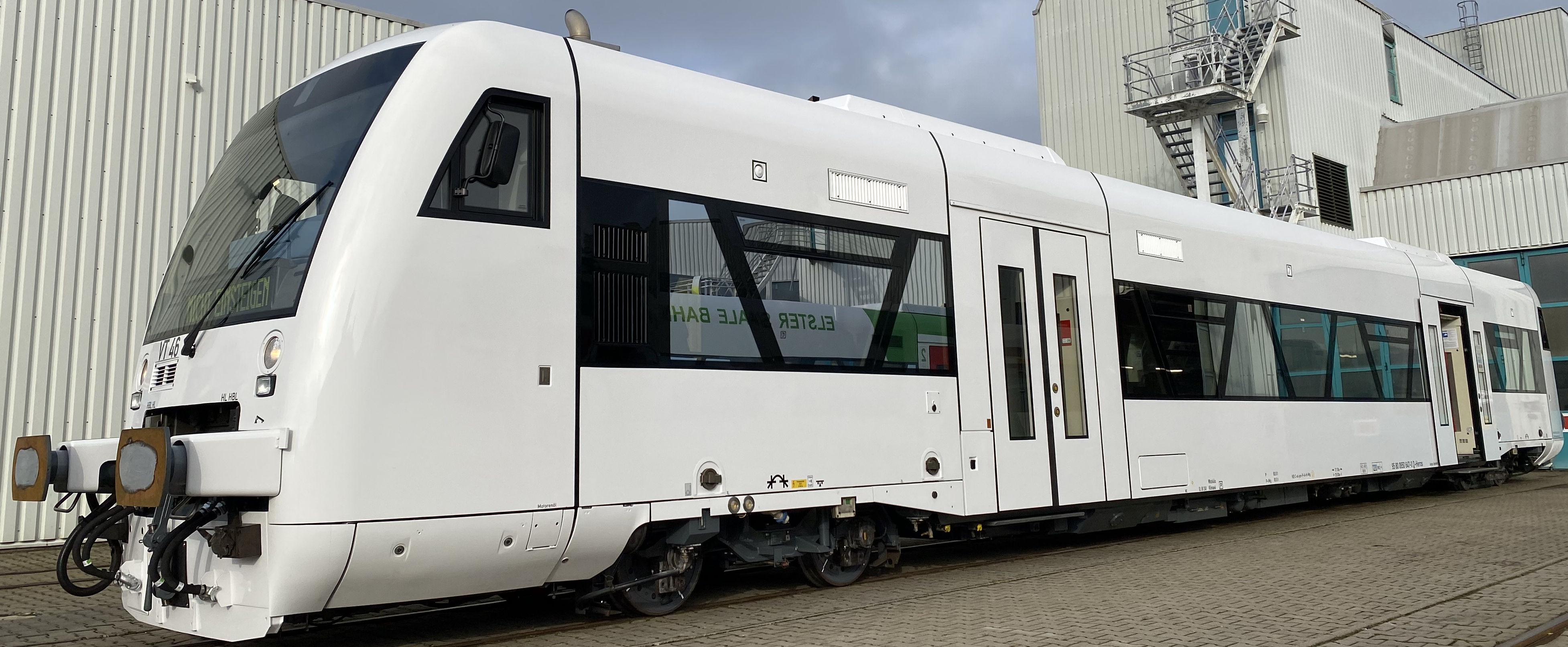
RegioShuttle RS1, series 3, regional rail services
The vehicles of the third series have the same basic vehicle design as the series 1 RegioShuttle. This series has also retained the basic concept of possibly using several vehicles in one train. Both the driver cab and passenger compartments of the vehicles are air-conditioned. In addition, these RegioShuttles are equipped with larger universal toilets. The layout is optimized for regional transport. The vehicles have a higher tare weight, allow greater loads and are therefore fitted with a more powerful braking system than the vehicles of the first series.
The RS1 have a passenger information system consisting of displays inside the passenger compartment, on the outside and at the front, as well as automatic announcements. Vending machines can also be installed in the multi-purpose areas inside the vehicles. The number of fixed seats can be varied by installing seats in the multi-purpose areas and by changing the number of flip-up seats accordingly. With their various features, these diesel multiple units are also proving to be suitable for the current and planned field of application in regional transport.
Photos of railcar RegioShuttle RS1, series 3, regional rail services
Technical data of railcar RegioShuttle RS1, series 3, regional rail services
(for information only)
| track gauge | 1,435 mm |
| maximum speed | 120 km/h |
| starting acceleration | 1.2 m/s² on average from 0 to 50 km/h |
| total weight | 49 t |
| unladen weight | 42 t |
| gap filler | Retractable step |
| floor height at entrance above top of rail | 580 mm … 600 mm in the low-floor area |
| percentage of low-floor area | 65 % |
| number of doors | 2 on each side |
| type of doors | Slide-plug doors with electric drive |
| span of entrance doors | 1,300 mm |
| number of 2nd class seats | 54 / 58 / 62 depending on vehicle design |
| number of tip-up seats | 15 / 12 / 8 depending on vehicle design |
| number of standees | 97 or 79 depending on vehicle design |
| air-conditioning | dirver cabs and passenger area |
| heating | Hot water with waste heat from the diesel engines and auxiliary heater |
| ventilation | Forced air ventilation |
| illumination | Fluorescent lamps and energy-saving lamps in the boarding area |
| toilets | Universal toilet |
| driver's / engineeer's cab | 2 (bidirectional vehicle) |
| toilet system | Vacuum |
| windows | Fixed, double-glazed windows |
| producer of vehicle | Stadler |
| train control | MICAS |
| car body | Steel |
| axle arrangement | B'B' |
| bogie wheel base | 1,800 mm |
| total wheel base | 18,900 mm |
| axle load | 15 t |
| secondary suspension | Air suspension / air ride |
| length over buffers | 25,500 mm |
| lenght of car body | 24,460 mm |
| distance between bogie centres | 17,100 mm |
| width of car body | 2,900 mm |
| height of car body above top of rail | 3,700 mm (railcar body) |
| smallest curve radius | 140 m (coupled) |
| smallest curve radius | 100 m (uncoupled) |
| buffers, draw hook, screw coupling | Yes |
| type of brake | KBC-el-pn-P-A-H-Mg (D) |
| braked weight / mass | P: 70 t; P+Mg: 86 t |
| diesel engine | 2x MAN D 2866 LUH 21 (EURO II) |
| engine output | 2x 257 kW at 2000 U/min |
| fuel tank | 2x 400 l |
| power transmission | Diesel-mechanic with retarder |
| workshop supply | AC 230V 50 Hz |
| manual transmission | Voith DIWA D864 (four-speed transmission) |


